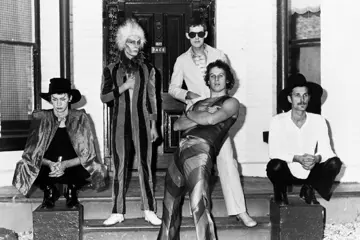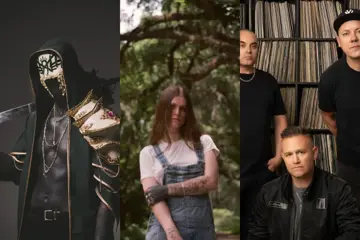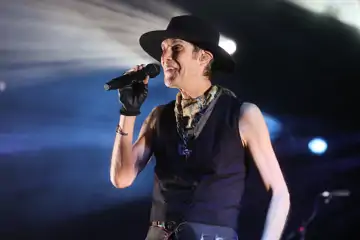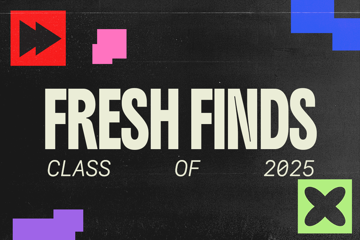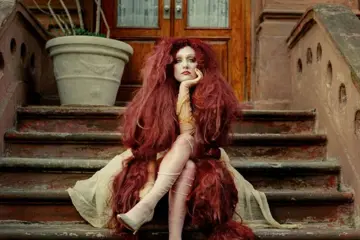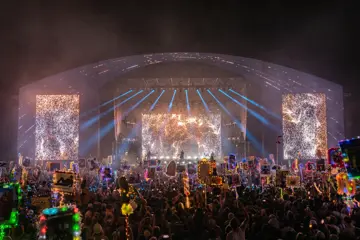Picture the scene.
Standing on the shoreline, looking out across the glistening waters of the Warringa and beyond the breaking waves of the Boree, Woollarawarre Bennelong squints as he scans the distant vista, his gaze fixed on the horizon. Through the white brilliance of the reflected Sun, carved through the ocean like a vast polished spearhead, there appears a procession of dark shapes, unlike anything he has seen before.
As they approach ever closer, their forms increasingly clear against the mirrored blue of the sea, the scale and purpose of this alien gathering remains mysterious. Bennelong could not have known it, but everything in his world was about to change. He could not have known that the names of his land, his people, the animals and plants, the cliffs and bays, were soon to be violently replaced. He could not have known that hundreds of years later, this would become known as the day of the invasion. It is January 1788 and Bennelong is standing on the shores of what is now known as Port Jackson in Sydney Harbour. The dark, unfamiliar shapes growing on the horizon are the flotilla of vessels of The First Fleet.
We can only speculate as to what the Aboriginal perspective of this first colonial incursion may have been; our country's earliest records are predominantly a chronicle of white experience. But regardless of the specifics, this moment is surely the most significant in Australia's history. It marks both the birth of a nation and the slow, deathly decimation of an ancient culture - a polarised duality that continues to be fiercely debated, most notably in the campaign to move Australia Day from the 26 Jan date that marked the coming of the first settlers.
"It's about a changing of culture and the attempt to share culture - where sharing culture worked and where it didn't."
But what of the people of who witnessed the arrival of the strangers? One of the most documented, fascinating, and controversial figures from those first interactions is Woollarawarre Bennelong, an Eora man who became a vital cultural conduit between Indigenous and colonial communities of Australia's early history. Kidnapped and held captive under the instruction of Governor Arthur Phillip in 1789, he would go on to form a close bond with his captor, voluntarily returning to the colony after escaping six months after his abduction. It would lead him on a journey to England, where he would learn English and how to read and write. But his embrace of such alien practices would ultimately leave him caught between two worlds - that of his ancestors and that of the invaders. Questions would linger over his actions; was Bennelong a peacemaker or a complicit enabler of his people's eventual subjugation?
Now, his extraordinary story is being told through dance in choreographer and Artistic Director Stephen Page's latest work for Bangarra Dance Theatre. Starring Beau Dean Riley Smith in the title role, Bennelong is a production that has proven to be an emotional challenge for many of the performers, including Daniel Riley, who will play the role of Governor Phillip. "The main accounts we have of this time are from white perspectives, so we've had to read between the lines to find the Indigenous experience from those documents," Riley explains. "It is hard, for sure, but there's also something very exciting about this story. It's about a changing of culture and the attempt to share culture - where sharing culture worked and where it didn't. Bennelong stood forward and wanted to share, he wanted to learn."
Playing Arthur Phillip has been a bittersweet journey for Riley. "He's kind of the villain of the piece, and that brings its own challenges. But it's really surprising what you absorb and uncover when you're exploring a historical narrative like this one," he shares. "One thing I was really struck by was that Phillips genuinely seemed to care. He genuinely wanted to learn and create something harmonious through his friendship with Bennelong. I guess the biggest tragedy of that is what came later - it makes you question what might have been."
In the nearly 230 years since Australia was colonised — or invaded — in the wake of massacres, stolen children, occupied lands and dehumanising prejudice, a process of reconciliation has sought to right the myriad wrongs committed against the Indigenous population. Most recently, Aboriginal leaders have called for landmark reform to Australia's political processes to give First Nationers greater parliamentary powers. The fact that Indigenous rights are still being fought for has reinforced the significance of telling Bennelong's story, Riley believes. "You can't help but think, 'What if? What if those early meetings with the fleet had been slightly different? What kind of history would we have had?' Indigenous nations are still fighting for recognition, so it's hugely important to keep educating audiences about our history and this first meeting between colonial and traditional owners, and to learn what was happening back then and how these events unfolded. We have to remember how far we've come, but also what we still haven't learnt after all these years."
Bangara Dance Theatre presents Stephen Page's Bennelong — 30 Jun — 29 Jul Sydney Opera House, 25 Aug — 2 Sep QPAC, Brisbane, and 7 — 16 Sep Arts Centre Melbourne.




